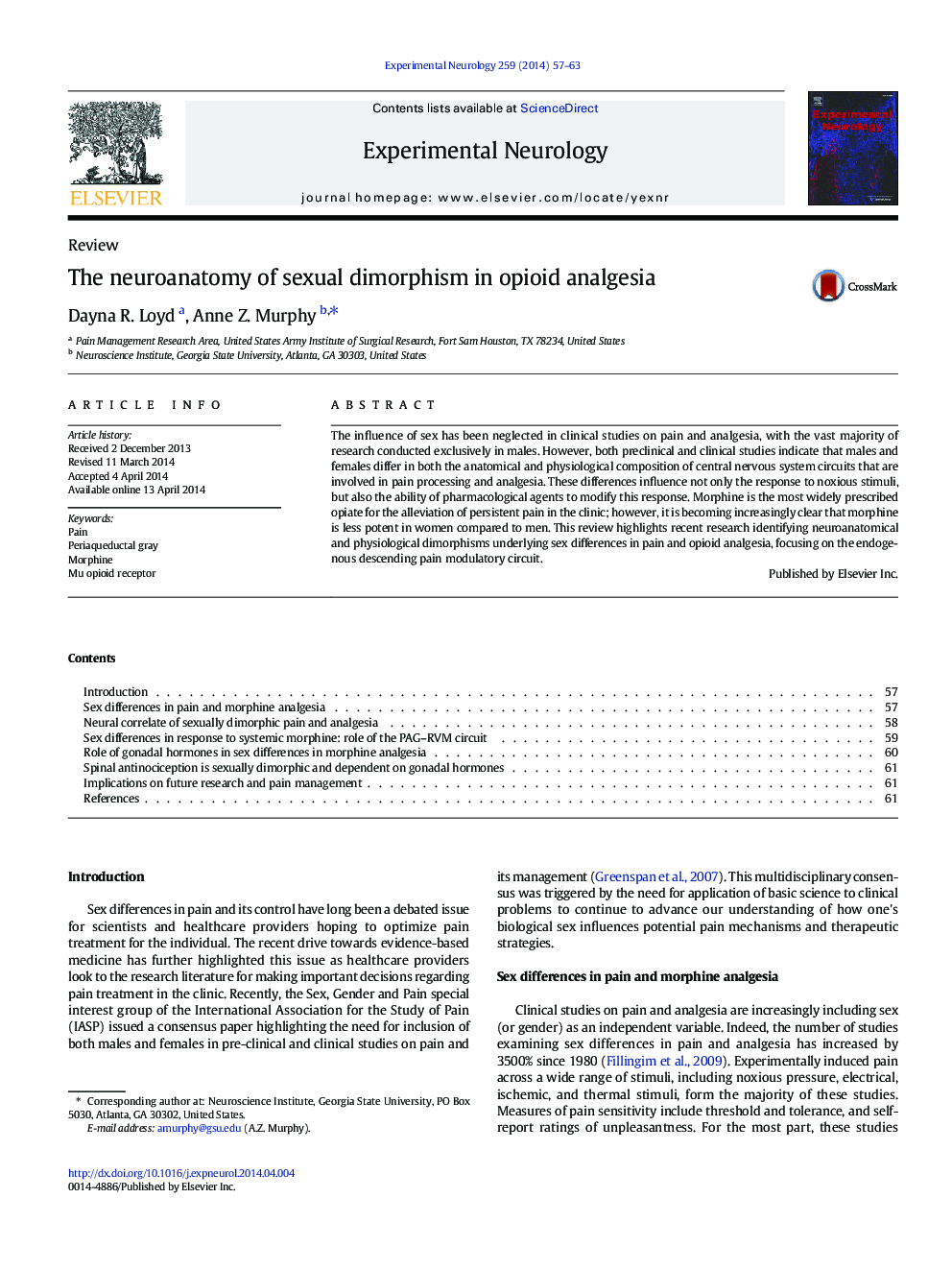| Article ID | Journal | Published Year | Pages | File Type |
|---|---|---|---|---|
| 3055478 | Experimental Neurology | 2014 | 7 Pages |
The influence of sex has been neglected in clinical studies on pain and analgesia, with the vast majority of research conducted exclusively in males. However, both preclinical and clinical studies indicate that males and females differ in both the anatomical and physiological composition of central nervous system circuits that are involved in pain processing and analgesia. These differences influence not only the response to noxious stimuli, but also the ability of pharmacological agents to modify this response. Morphine is the most widely prescribed opiate for the alleviation of persistent pain in the clinic; however, it is becoming increasingly clear that morphine is less potent in women compared to men. This review highlights recent research identifying neuroanatomical and physiological dimorphisms underlying sex differences in pain and opioid analgesia, focusing on the endogenous descending pain modulatory circuit.
